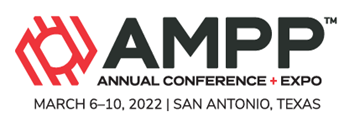Search
Online Conference Paper
View as
Sort by
Display
per page
Predicting the Enhanced Effects of Coating Deterioration in Marine Environments
Product Number:
51323-19341-SG
Publication Date:
2023
$20.00
Prediction And Mitigation Of Top Of Line Corrosion Risk Due To Damages In External Pipeline Coating
Product Number:
51321-16789-SG
Publication Date:
2021
$20.00
Prediction Of Atmospheric Corrosion On Steel Bridge Components In A Changing Climate
Product Number:
51322-17953-SG
Publication Date:
2022
$20.00
Prediction Of The Mitigated Corrosion For Inhibitor Applications In Oil And Gas Operations
Product Number:
51321-16704-SG
Publication Date:
2021
$20.00
Predictive Analytics and Machine Learning in Integrated External Corrosion Management
Product Number:
51323-19393-SG
Publication Date:
2023
$20.00
Predictive Coating Condition Model For Coating Lifetime Under Environmental Stressors
Product Number:
51322-17685-SG
Publication Date:
2022
$20.00
Preliminary Investigation on Ultrasonic Spot Welding of Aluminum Alloys
Product Number:
MPWT19-15298
Publication Date:
2019
$0.00
Preliminary Results From Assessment Of Advanced Manufacturing Technologies (AMT) For Reactor Materials And Components
Product Number:
ED22-17118-SG
Publication Date:
2022
$20.00
Preliminary Study on Al2O3 Sol-Gel Coating for Corrosion Protection of Martensitic Stainless Steel in Artificial Geothermal Water
Product Number:
51321-16777-SG
Publication Date:
2021
$20.00
Preliminary Study to Characterize Concrete Durability by Water Permeation and Electrochemical Impedance Spectroscopy
Product Number:
51324-21167-SG
Publication Date:
2024
$40.00
Premature Failure of Copper Nickel Tubes Due to Microbiologically Influenced Corrosion (MIC) -A Case Study
Product Number:
MECC23-20150-SG
Publication Date:
2023
$20.00
Preservative Biocide Selection and Performance in High Pressure High Temperature Bioreactors using a Thermophilic, Hydraulic-Fracturing Relevant Culture
Product Number:
51323-18967-SG
Publication Date:
2023
$20.00












